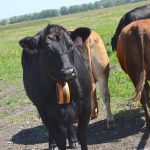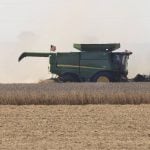Spray your canola with dicamba? Not likely.
But a Nebraska researcher thinks placing genes that give resistance to the herbicide dicamba in broadleaf plants may create a new option in herbicide-tolerant oilseeds.
In the future it could be included in a genetic package with Roundup Ready or Liberty Link oilseed crops, said Don Weeks of the University of Nebraska at Lincoln.
Weeks admits the agronomics of his discovery have yet to be worked out. But the researcher is convinced that because the herbicide dicamba breaks down readily in soil but possesses limited residual weed control, it is ideal for some commercial cropping applications.
Read Also

Trump cuts off trade talks with Canada
(Reuters) – U.S. President Donald Trump said on Thursday that all trade talks with Canada were terminated following what he…
It was the method by which dicamba, found in herbicides such as Banvel, is broken down that led to the discovery of its genetic secrets.
Weeks surveyed the soil at a dicamba production facility to find the micro-organism that deactivates dicamba in the soil. He then isolated the gene that causes the micro-organism to act that way.
Cereals produce an enzyme that breaks down the herbicide, making them naturally resistant to this broadleaf weed, group 4 chemical. Broadleaf plants don’t have that natural tolerance, but now it can be added by inserting the tolerance gene found in the micro-organism.
What makes the discovery unique is the gene’s ability to be placed successfully in the plant’s chloroplast DNA. The chloroplast resides on the female side of the plant’s genetics, meaning that the new gene, once added, would not outcross through pollen.
“No pollen drift issues means potentially that we might expect better acceptance from the marketplace than if it could be spread through pollen drift,” he said.
Tobacco was the first target for genetic modification because of its ease of transformation.
“Soybeans are a little tougher, but we can do it and canola will follow. First we want to pick a crop that is big in the Midwest and so soybean gets it first,” said Weeks.
Bill May of Agriculture Canada in Indian Head Sask., thinks the idea may have merit for canola but noted there are already Liberty Link, Roundup Ready and Clearfield options available.
“For some, the addition of the group 4 herbicide (resistance) could expand the effectiveness of weed control in canola.
“I don’t think it would be necessary as a stand-alone (genetically modified) crop, but as an addition to Roundup or Liberty Link canola it might have real possibilities,” he said.
“Where it could be really useful is in peas or lentils where weed pressure is a big problem. But market acceptance for genetic modification in those crops isn’t there so far,” he said.
Hugh Beckie of Agriculture Canada in Saskatoon thinks that while the discovery may be a solution in search of a problem, dicamba resistance could be an advantage for mid-season broadleaf weed control in soybean and canola crops.
“(But) we wouldn’t want to lose the ability to control volunteers with 2,4-D (a group 4 cousin to dicamba) and so we would need to ensure that 2,4-D maintained its abilities (to kill dicamba-resistant volunteer plants),” he said.
“Greater use of a herbicide always has risks of resistance building up in the weed population. But dicamba is one of the better (herbicides) for that. Kochia is one of the few examples of dicamba-resistant weeds, but it’s a short list,” said Beckie.
Neil Harker, an Agriculture Canada weed specialist in Lacombe, Alta., said canola has some natural dicamba resistance now.
“Years ago some producers would use it at the two or three leaf stage to control mustard and stink weed (in canola). It was risky, but if done well it was effective,” he said.
“Sometimes it is better to look at new ways to use the existing herbicides we have and dicamba may be one of the better choices,” he said.
Weeks said once implanted, the gene imparts strong resistance.
“We tested it very successfully at 50 pounds (of active ingredient) to the acre and the test plants didn’t even notice. At 100 and 200 lb. the (adjuvant) was causing more trouble than the dicamba. It was like bathing the crop in gasoline.
“We couldn’t even tell if the dicamba was a problem, there was so much (adjuvant),” he said.
Weeks hopes to attract funding from a major herbicide or plant breeding company to continue the research and find an improved method of adding the gene to the soybean’s chloroplast.
“We are several years out now, but with funding the project could solve the breeding problem very quickly. Then it is few years of trials and approvals,” he said.














